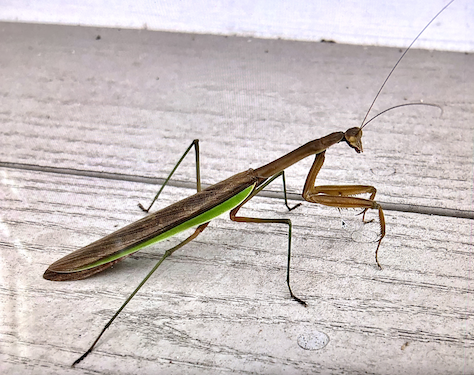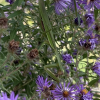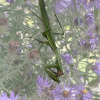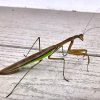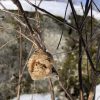Above: A SOLF Trustee gives us a close up look at a common, but often hard to spot, creature living in our yards and natural spaces around us. (image cropped from photos by Debbie Costine)
[This post is part of a special guest series focused on appreciating nature in Southborough, contributed by the Southborough Open Land Foundation (SOLF), a non-profit dedicated to preserving and stewarding natural resources here in town.]
What has five eyes, two pairs of wings, six legs, two of which are spiked, night vision, and appears to disappear?!
Our first encounter with a Praying Mantis is always memorable, prompting us to say “What is THAT?!” We see a long twig-like insect often walking slowly along a branch or flat surface.
[Editor’s Note: I had so much trouble finding the Praying Mantis in Debbie’s contributed photo of a Praying Mantis with its prey, that, I added an edited version for readers who are also less eagle eyed than her!]
In North America they are usually green and brown with a triangular head and two large bulging eyes and three small ones. One of the small eyes, front and center, is capable of providing a unique form of 3D vision!
The mantis has two enlarged, spiney forelegs for catching and holding its prey. When those forelegs are folded up it resembles a praying posture. The other four legs do the walking. Some mantises can fly. The most common mantis in New England is the Chinese praying mantis, brought here by accident in 1896.
Adult females lay hundreds of eggs in autumn encasing them in a hard foam usually on branches. Often the female eats the male after mating and she dies soon after laying her eggs. In the spring many tiny nymphs hatch and begin their short life’s work of eating. (often each other)
Want to learn more about SOLF, or volunteer or donate? Check out our site, we’d love to hear from you.
Debbie Costine, is a SOLF Trustee, artist and curious naturalist
SOLF – Southborough Open Land Foundation

